The latest Lessons from the Screenplay video tackles problems in the new Star Wars movies. When Rogue One is contrasted with The Force Awakens, the former is revealed as lacking in a number of plot and character-driven areas. I have to say that I agree with this take and it’s excellent to see my feelings on Rogue One’s shortcomings so well articulated.
First up, the inescapable error of Jyn Erso as a “passive protagonist.” This was one of my biggest hang-ups about Rogue One. While we get an emotional and moving intro scene where tiny Jyn watches her parents get killed and captured by the Empire, after that the movie skips ahead 15 years, and we know pretty much nothing about the adult Jyn or who she really is (and we never learn).
As the video points out, one of the first rules of good storytelling is to show, don’t tell, but with Jyn, we’re constantly getting exposition about what kind of a person she is, like when she’s read a long list of her crimes against the Empire but not how or why they were committed. She makes statements about who she is sometimes, but rarely takes action to prove it.
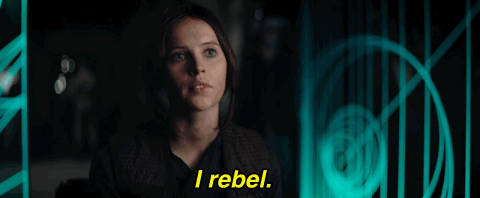
Or so we are told. (image: Disney)
Contrast this to our introduction to TFA’s Rey, spending six minutes (a long time, movie-wise) with her as she scavenges to survive in her lonely life on Jakku. We, the audience, understand Rey and her motivations because we experience them with her. Rey, as an active protagonist, becomes recognizable and sympathetic in a way that Jyn does not.
Lessons points out another important active/passing writing tip in terms of plot: if a character feels undefined, the screenwriter is meant to ask themselves whether that character is an active force in the screenplay—”whether they cause things to happen, or whether things happen to them.” All throughout Rogue One—pretty much until the end—everything happens to Jyn and not the other way around, and her character does not make meaningful choices to show us who she really is. (Here the video also points out a serious flaw in Rey—that she’s defined by the idea that her family will one day return for her on Jakku, while all evidence points to the contrary.)
(Of course it’s incredibly awesome to be talking about two Star Wars movies with two female protagonists, but just because they’re ladies doesn’t mean we shouldn’t criticize their flaws. And maybe one day I’ll be talking about a Star Wars female heroine who isn’t white and brown-haired, but that’s for another article.)
Protagonists aside, the heart of the argument here is that the first half of Rogue One is unnecessarily complicated and has elaborate scenes that ultimately aren’t ultimately meaningful. That’s a lot of wasted movie. The second half is a lot more compelling, since the characters’ objectives become clear, and feels like a totally different film.
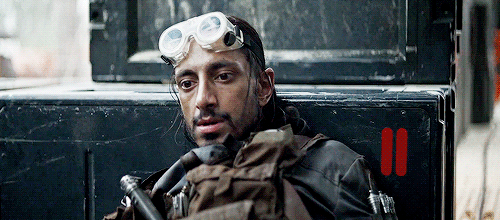
Don’t you wish I’d had more lines? Me too. (image: Disney)
Personally, I loved the end of Rogue One and thought that it was exciting and moving, but also a missed opportunity because we hadn’t been properly invested in the characters. We would’ve been impacted by their deaths 1000% more if they’d actually had, you know, character-building scenes and interaction as a team instead of 32-minute gun battles in the rain.
While I absolutely adored my brief time with intriguing characters like Bodhi Rook, Chirrut Imwe and Baze Malbus, I hardly even knew their names before I got home and looked them up.
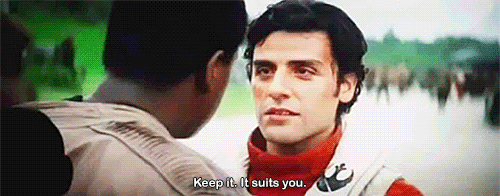
Character building. (image: Disney)
Compare that to The Force Awakens, whose characters are well-defined even if they only had a handful of scenes—like Poe Dameron and General Hux. We know who they are, what motivates them and makes them tick. You can’t say the same thing about the crew of Rogue One, for all that they went out in a blaze of tragic glory.
What do you think about the comparisons made here? Do you agree or disagree? Let’s fight it out in the comments.
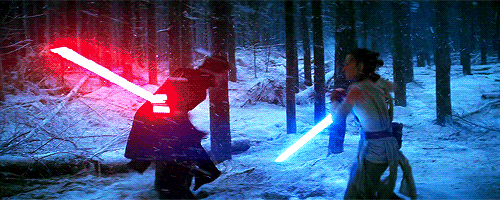
(image: Disney)
(top image: screengrab)
Want more stories like this? Become a subscriber and support the site!
—The Mary Sue has a strict comment policy that forbids, but is not limited to, personal insults toward anyone, hate speech, and trolling.—



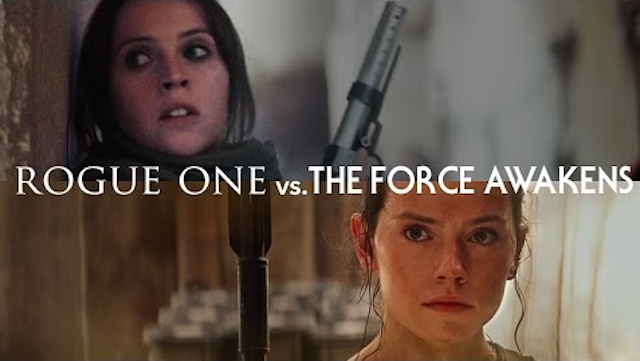






Published: May 2, 2017 01:47 pm